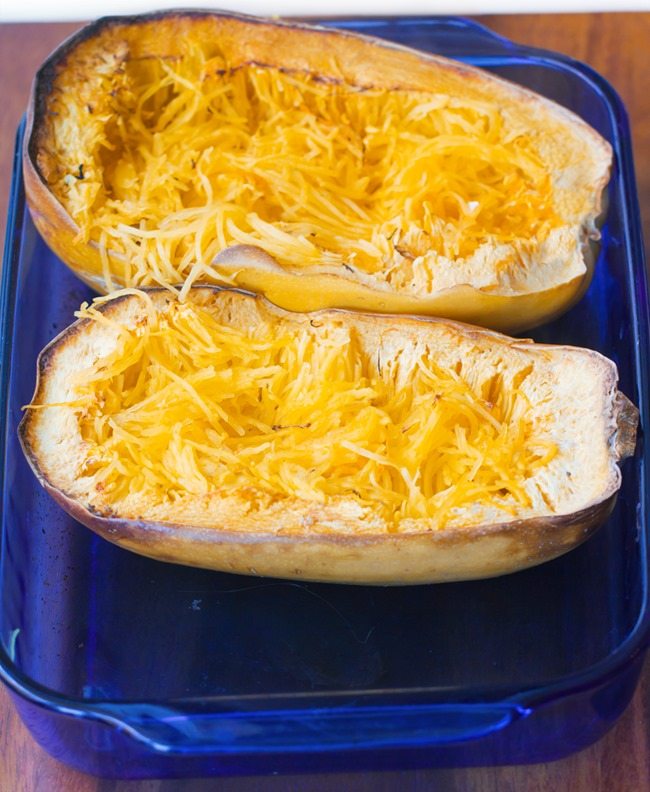

If you’d like, you can mix the strands with other ingredients and then stuff them back into the hollowed-out spaghetti squash shells. I've found that storing the strands in a glass pyrex and covering only with a paper towel is best, because it allows water to escape instead of getting trapped inside the container and weighing down the roasted squash. Remove from the oven, and scoop out the strands. Large squashes will take around 40-50 minutes to roast fully, but very small ones may take less time, so it’s a good idea to check the squash after 20-30 minutes. Place the pan on the middle rack in a non-preheated oven, then set the oven to 460 F. You can opt to scoop the seeds out and season after baking if you prefer. If desired, scoop the seeds out and brush the squash strands with olive oil and sprinkle with salt. I haven ‘t tried this yet, but I am intrigued!) Place the squash-flat sides up-in a baking pan. (Some readers say that cutting it width-wise gives you longer strands. To Make: Carefully cut the spaghetti squash in half, lengthwise. However, small ones will also work if they are all you can find. *Note that larger spaghetti squashes tend to yield sweeter strands. Trending Recipe: Buffalo Cauliflower Wings It calls for roasting the spaghetti squash at 460 F, which is higher than any other recipe I’ve ever seen and works beautifully to caramelize the natural sugars in the squash and zap away extra moisture, leaving you with perfectly cooked spaghetti squash that is ready to be dressed up however you wish or even eaten by itself.

Baking spaghetti squash how to#
The following recipe is my favorite method for how to cook a spaghetti squash that yields non-watery results every time.

If you’ve made spaghetti squash this way and do prefer steamed strands, that’s fine…īut I much prefer it roasted, so if you’ve had spaghetti squash in the past and think you aren’t a fan, it might be worth giving the vegetable one more chance. I think this is a mistake because the extra water and lower temperature mean you end up with watery, steamed spaghetti squash instead of sweet, roasted spaghetti squash, especially if you don’t cut the squash in half to give the moisture inside the squash a place to escape.Īnd watery strands will, in turn, also water down whatever sauce you choose to put on your spaghetti squash after cooking. So many tutorials for how to cook spaghetti squash will tell you to poke holes in the vegetable, add water to the bottom of the pan, and either cook the whole thing or two halves at 350 F or 375 F. Another thing to keep in mind if you think you hate spaghetti squash is that it might just be the way you’ve been cooking it.


 0 kommentar(er)
0 kommentar(er)
